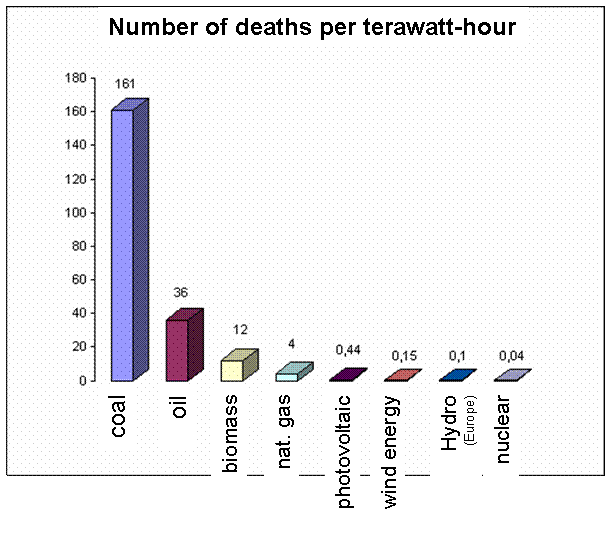The Fukushima nuclear reactor crisis has provided anti-nuclear activists with an assortment of (unsubstantiated) scare stories for turning the tide of public opinion against nuclear energy. So it’s little wonder that few places have been so gripped by hysteria as Germany, home to a large number of eco-stalinists and chronic doomsayers in the media.
German warmist website klimaretter.de (climatesaviour.de in English) writes that this however is not the case in Finland. Despite Fukushima, Finland is still very much in favour of using this plentiful source of zero-emissions energy. Klimaretter writes:
Despite the bad experiences encountered building the Olkiluoto 3 reactor– which will be finally finished 4 years later than planned and at double the cost in 2013 – the government approved the new construction of two additional nuclear reactors. And approved is approved, ways Mari Kiviniemi, head of the government.”
And why not? Nuclear power has been the safest of all sources of energy so far, as I mentioned in a previous post, renewable energy sources have many more deaths per terawatt-hour of electricity produced than nuclear. The dangers of nuclear power are mostly hype, and nothing to do with reality.
Source: http://nextbigfuture.com/2011/03/lowering-deaths-per-terawatt-hour-for.html
The Finnish government reminds us that in Finland there is practically no danger of earthquakes or tsunamis. And klimaretter reminds us:
The emergency power supply in the event of a disruption of the external power source für is already with the old reactors are designed twice as safely as the Japanese damaged reactors.
One thing that the panic purveyors seem to forget is that there are concepts in engineering and design called “applying lessons learned” and “continuous improvement”. No doubt the Japan earthquake exposed the weaknesses of the older Japanese reactors and safety systems. ´But in the end, this will be a blessing in that the lessons learned can now be implemented into the design of the new generation reactors, thus making the safest source of energy out there even safer.
Silly, desperate argument: “What if a plane crashes into it!”
This is a silly argument because planes could crash into anything, and so then nothing ought to be built. What if a plane crashed into a hydro-electric dam? A chemical plant? A football stadium?
Like anything else, all we can do is reduce the risk. And the best way to reduce risk in energy supply is to use the system that has proven to be the safest. That choice is obvious.
Thanks to reader DirkH for this video of a test plane colliding into a conrete wall at 500 mph. Risk dispelled!






Good article on the BBC about radiation doses, warning against radiation paranoia and emphasizing the rather astounding repair capabilities of our bodies.
“patients receiving a course of radiotherapy usually get a dose of more than 20,000 mSv to vital healthy tissue close to the treated tumour.”
by
“Wade Allison is a nuclear and medical physicist at the University of Oxford, the author of Radiation and Reason (2009) and Fundamental Physics for Probing and Imaging (2006).”
http://www.bbc.co.uk/news/world-12860842
I have read somewhere that in the early days X-rays became public entertainment. On fancy fairs you could get an X-ray photo in front of the amazed public. People were more relaxed in that time.
Oh, and what if a plane crashes into the thick shock-absorbing concrete shell of the containment? Will the same thing happen that we saw in 9/11, when planes crashed into glass facades of office buildings?
Or: Does a concrete wall have the same physical properties like a glass facade?
Inquiring minds want to know.
Crash test, running a jet with 500mph into a concrete wall
http://www.youtube.com/watch?v=25vlt7swhCM&feature=player_embedded
Thanks Dirk. So much for that risk!
It was the fuel on the jets on 911 that caused the damage.
The towers had been built to withstand a collision by a 707 – being the aircraft de jour when the towers were originally planned.
If you watch some of the videos of the plane hitting the second tower you can see the atomization taking place.
Nuclear Radiation, Japan and the inverse square law.
http://modernsurvivalblog.com/nuclear/radiation-japan-and-the-inverse-square-law/
Monckton on Japan
http://scienceandpublicpolicy.org/images/stories/papers/originals/co2_jan_2011.pdf
The risk is speed versus mass. We all know that.
A F4 Phantom at @ 5oo km/h (approx. 25 tons) is nothing compared to a 737-800 @ 800 km/h (87 tons)
Around 800 km/h was the speed the aircraft were flying when they hit the WTC.
But I agree the risk of an aircraft flying into a nuclear plant is very small.
Missiles, bombs and planned terror attacks (inside job) are a much bigger risk. But who is interested to attack a place which is well prepared for ‘containment’ if you can make a dirty bomb and ignite it in a big city center?
One very spectacular video of the Tsunami
http://www.dailymotion.com/video/xhtvtc_new-shocking-video-of-the-japanese-tsunami_news
R. de Haan
27. März 2011 at 21:03 | Permalink | Reply
“The risk is speed versus mass. We all know that.”
That’s the kinetic energy of the object. Kinetic energy isn’t the same as useful impact energy. Ever done a Charpy impact test on materials? Aluminium cans (bodies) are made by “firing” a metal pellet into/onto a former at very high speed. All the energy to form the material is kinetic. The aluminium ends up being “smudged” over a surface.
The video shows exactly how the energy is absorbed: by disintegration of the very fragile aircraft. Fragile, compared to the concrete.
“A F4 Phantom at @ 5oo km/h (approx. 25 tons) is nothing compared to a 737-800 @ 800 km/h (87 tons)”
The video shows the Phantom at 500 mph; that’s 800 km/h. The text on the screen says 800 km/h. Most of the mass in the aircraft is in the engines and the fuel. The latter is fluid which will splatter over a wide area even more readily than the aircraft frame and skin.
As in the WTC, the worst effect would be from the jet-fuel fire with a substantial load, which can damage ancillaries to a nuclear plant.